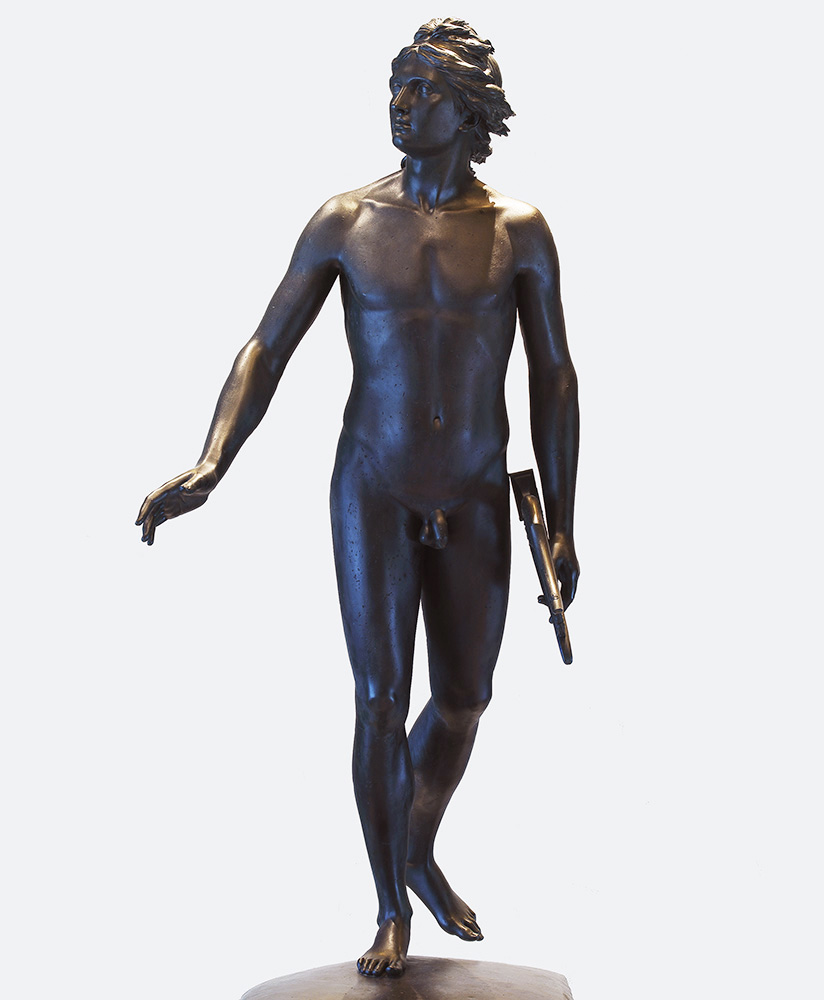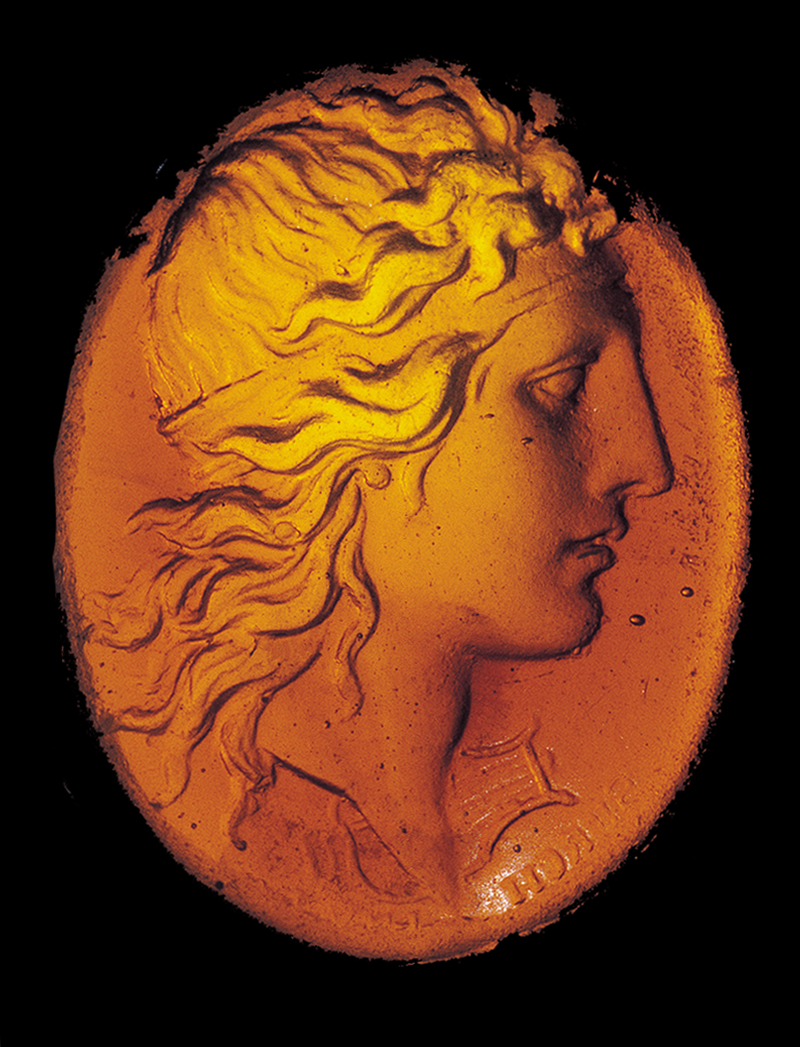Apollo and the lyre

Apollo is one of the most well-known gods of Greek and Roman mythology. The twin brother of Diana, goddess of the moon, hunting and forests, Apollo was associated with the sun and war, but also with music, dance and poetry.


Apollo is represented in different forms in the Calouste Gulbenkian Museum: we find him on gems, coins and medallions, generally with long flowing hair and a diadem. However, the most notable representation of the god in the collection is probably the sculpture by Jean-Antoine Houdon, which greets visitors in the atrium of the building of the Museum
Calouste Gulbenkian acquired this work in 1917. The figure’s pose and the clear classical influence suggest that the sculptor was inspired by the famous sculpture Apollo Belvedere, discovered in the 15th century, now in the Vatican Museums – it is not known exactly when it was made, but it is the copy of a Greek original attributed to Leochares, dating from c. 350–325 B.C.
However, unlike the Roman sculpture in which he would be holding a bow, one of the features that accompanies many of his representations, Houdon’s bronze Apollo has in his left hand a lyre, another symbol with which he was associated. Often used in Ancient Greece, the lyre may have had its origin in another string instrument, the chelys, whose name derives from the Greek word for tortoise, in a reference to the material from which the soundbox was made.
Instead of playing the instrument with their fingers, like the harp, players of the lyre used a plectrum, a kind of pick, which they would hold in their right hand; with their left hand they would silence the strings not being used. The number of strings, which were made with the guts and tendons of oxen and rams, varied over the years.
There are different variants of the lyre spread throughout the world. In 2012, in Scotland, a burnt piece of wood was found which would have been part of a lyre over 2300 years old. It is possibly the oldest European string instrument to have survived until today – although several graphic records are known to exist, the material from which these objects are built, wood, has made their survival difficult.
A Collection of Stories
On a weekly basis, we shared a story around Calouste Gulbenkian’s collection. This section was created in 2020, which is why the articles refer to the Calouste Gulbenkian Museum collection as the Founder’s Collection.
Other stories